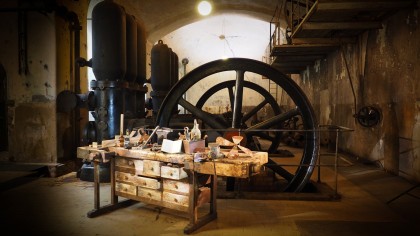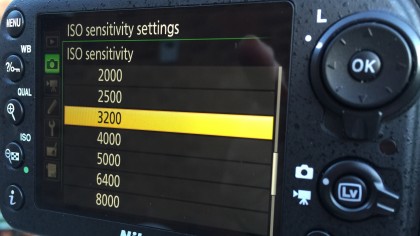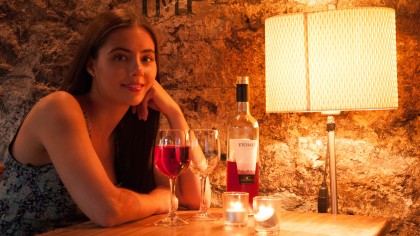
Why does blur happen?
Blurry photos are the number one annoyance for any photographer and they always seem to happen to those once-in-a-lifetime photo opportunities. Just ask Apple boss Tim Cook, who tweeted this blurry nonsense from the Super Bowl on the weekend.
We've got some photo tips for Tim, and for anyone who wants smarter shots from their smartphone:
1) Stand still! It's supposed to be your subject that's moving, not the camera.
2) Brace yourself. Smartphones are pretty good in low light these days, especially iPhones, but the shutter speed will be low and you still need to give them half a chance. Use a wall, a doorway or somebody else's shoulder if you have to.
3) Where's your subject? You need to work out what you're taking a picture of, and 'things in general' isn't the answer.
4) Grab a banker shot because you don't know how long you've got – but then use any extra time to go and explore some more angles.
5) Where's the panorama, Tim? They're really easy to shoot on an iPhone, they take no more than a few seconds to shoot and an indoor stadium will give you a spectacular photo.
For more tips on getting sharper shots with smartphones, compact cameras and DSLRs, keep reading. Our tips won't cure everything, and sometimes the conditions are so bad that there's no way you'll be able to get a sharp shot whatever you do.
But if you try out these quick and simple tips you really will boost your success rate for sharp photos, even when the odds are against you,
- The countdown to Super Bowl 52 has begun. See how you can stream Super Bowl 2018 online for free.

1 Focus first
Sometimes your shots are blurred simply because they're not in focus – or the camera has focused on the wrong thing. Modern cameras can focus really fast, but you still have to give them a fighting chance. You can do this by making sure the camera has locked on to your subject before firing the shutter. Don't just stab at the shutter release button or the screen – treat every photo as a two-step action
(1) Half-press to focus
(2) Full press to shoot.
Or, on a smartphone, tap the screen to focus, then tap the shutter button to take the picture.

2 Focus pointers
You also need to make sure your camera is focusing on the right thing. On a smartphone it's easy – you can leave it to find a focus point automatically or tap an object on the screen. Regular cameras are trickier because there are three main modes:
(1) Automatic focus point selection: here, the camera picks a focus point automatically, usually picking the object nearest the camera – it's quick and simple, but doesn't always focus on what you want.
(2) Manual focus point selection: you move the focus point around the frame yourself, just like tapping the screen on a smartphone – it's more precise, but you won't always have time.
(3) Continuous autofocus: here, the camera focuses continually all the time you're half-pressing the shutter release – you're photographing moving subjects, this is the one you need.

3 Brace yourself
Most blur is caused by camera movement during the exposure. This happens most often in poor light, when the camera has to use a slower shutter speed, and you can reduce or eliminate this camera movement by bracing it against any nearby object – it could be a table top, the back of a chair, a door frame or your friend's shoulder. You'd be surprised at the quality of the low-light shots you can get just by bracing the camera, like this one (above) taken in an abandoned factory. And take a couple – if one's not sharp, the other might be. This is especially important with long-range telephoto shots because blur increases in proportion to the lens's magnification. Even in good light, hand-holding a powerful telephoto is risky, and it's much better to use a monopod or rest it on a fence or some other nearby object.

4 Trust your tripod
Ideally, you'd use a tripod in low light, and this will stop camera movement altogether. This means you don't have to worry about the shutter speed, which means you can set the lowest ISO setting on your camera. You'll need to do set the ISO manually because if you leave the camera to choose the setting it will automatically increase the ISO in low light conditions – it can't tell when you're using a tripod and when you're not. So why set a low ISO? Because the lower the ISO, the less noise in your images and the sharper the detail. Night shots taken with a tripod can look amazingly sharp and detailed, and the light trails created by traffic look fantastic.

5 Become an ISO expert
Your camera's ISO setting is important because you can use it to get faster shutter speeds. A one-step increase in ISO, from ISO 100 to ISO 200, say, will give you a one-step increase in shutter speed, from 1/60sec to 1/125sec, for example. This can be enough to stop not just camera shake but subject movement – the other big cause of blurry photos. Not all cameras will let you set the ISO manually, but some more advanced models have an Auto ISO setting that can set the lowest ISO possible while still giving you the shutter speeds you need. There's on thing to remember about ISO settings – a higher ISO will produce noisy images, but better a noisy image than a blurry one!

6 Look for the light
Some of the most dramatic and memorable shots coincide with the most difficult lighting – but don't be a victim of circumstance, because you have the power to change the conditions! If you want to take a photo of your partner in a dimly-lit restaurant, move the candle closer to their face (but not too close!) and if you're strolling through city streets at dusk, look for streetlamps, floodlighting, light spilling from doorways or even neon signs. You can use these to light your subject or even make a great picture in themselves. City streets at night are full of light, so look for it and use it.

7 Stabilizer secrets
It's so much easier to get great shots in low light these days, thanks partly to better sensors and higher ISO settings, and partly to image stabilizers. But image stabilizers have an important limitation, whether they're built into the lens or the camera body itself. Image stabilizers are very good at reducing camera movement, and it's often possible to shoot handheld using shutter speeds far lower than any you would attempt normally (1/4sec instead of 1/60sec, for example), but the length of the exposure stays the same, and image stabilizers can't stop blur caused by your subject moving. If you're shooting a soccer match, for example, you'll need a shutter speed of 1/500sec (or faster) to stop the players blurring as they run, regardless of whether your camera or lens has an image stabiliser.

8 Speed it up
This is a key point if you want to avoid blurry photos. If your subject is moving, you'll need a shutter speed fast enough to freeze that movement, or at least retain an acceptable amount of detail – the exact speed varies according to how fast they're moving, how far away they are and more. Soccer players will need 1/500 sec or faster and this is a good working minimum for most sports. More advanced cameras let you set the shutter speed manually. More basic point and shoot models don't – but many of these do have 'Action' or 'Sports' scene modes that set faster shutter speeds automatically.

9 Pan with the action
Sometimes the light is just too bad for fast shutter speeds, or you're using a camera that doesn't give you that kind of control. Don't let that stop you from trying to take the picture though – the golden rule is always to follow your subject (or 'pan') with the camera. Start following them in the viewfinder or on the screen even before you press the shutter and keep following them even after the shutter has fired – it's this smooth 'follow-through' that delivers the sharpest results. If you're feeling creative you can deliberately choose a slower shutter speed (maybe 1/125 sec or 1/60 sec) so that your main subject stays relatively sharp but the background is blurred. This is a great technique for shooting race cars or motorcycles, but it takes practice.

10 Ready to burst?
Using your camera's continuous (burst) mode in combination with this 'panning' approach can often get you a sharp shot even in the most difficult conditions. On some cameras, like this Nikon, the burst mode is on a dial on the camera – on others, it's somewhere in the menus. When you stab at the shutter button to grab a single image you're risking camera movement, but when you hold down the shutter button in burst mode and follow the subject, the camera won't get jogged in the same way. You can try this technique in low light even if you really want just a single shot rather than a sequence – all you do is pick the best one later and discard the rest. Nikon, for example, already uses this technique in some of its cameras for a 'Best Shot' mode.
That's the beauty of digital cameras – it costs nothing to experiment, and it means you can capture spectacular pictures that no one would even have attempted in the days of film. Not every photo will work out, but with these simple tips you can really boost your hit rate of sharp shots and, just maybe, capture something really special.
The TechRadar hive mind. The Megazord. The Voltron. When our powers combine, we become 'TECHRADAR STAFF'. You'll usually see this author name when the entire team has collaborated on a project or an article, whether that's a run-down ranking of our favorite Marvel films, or a round-up of all the coolest things we've collectively seen at annual tech shows like CES and MWC. We are one.